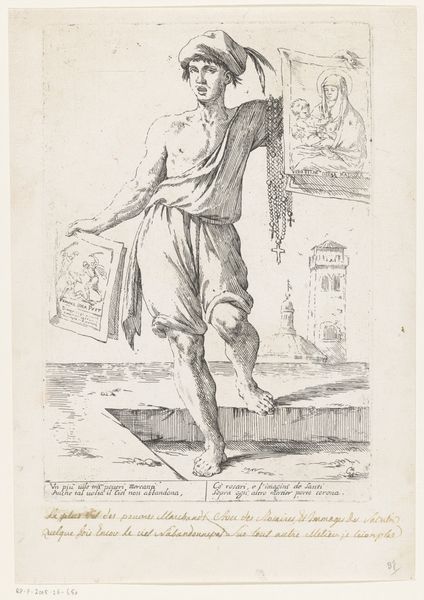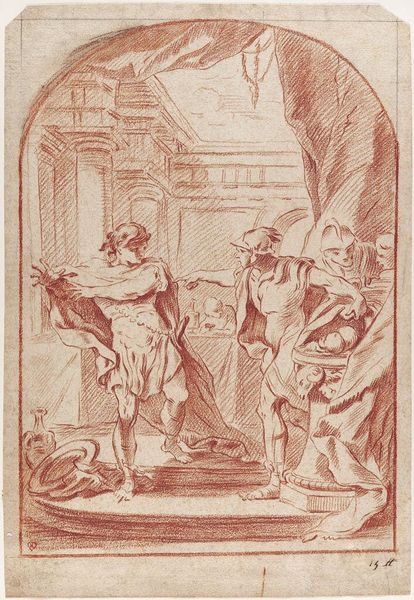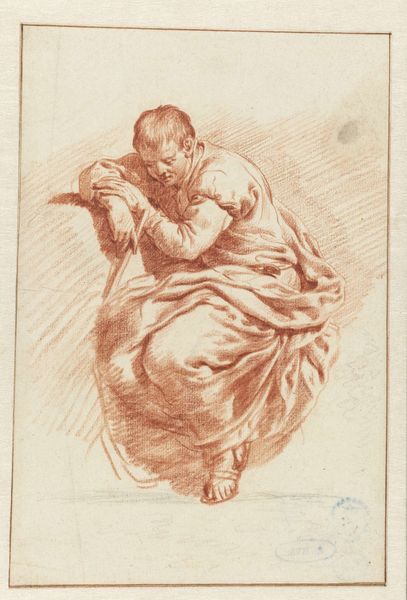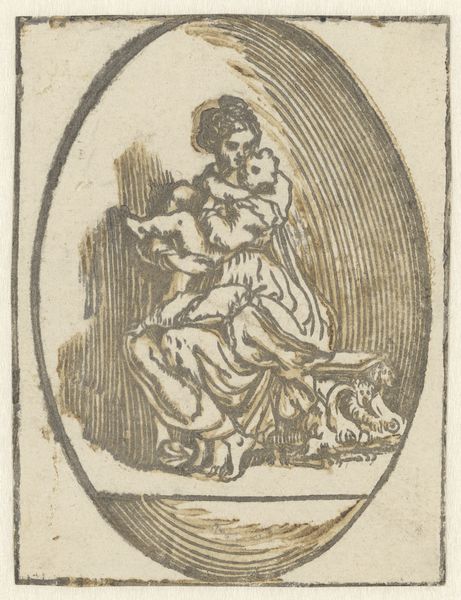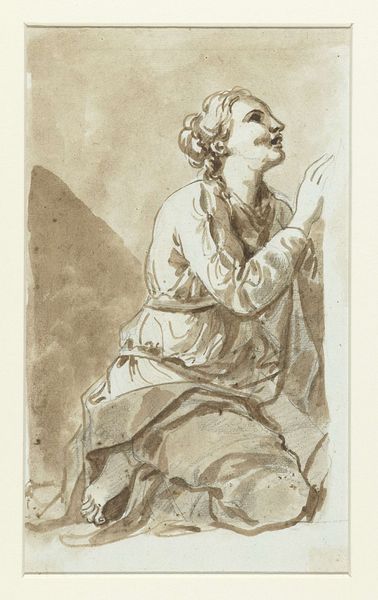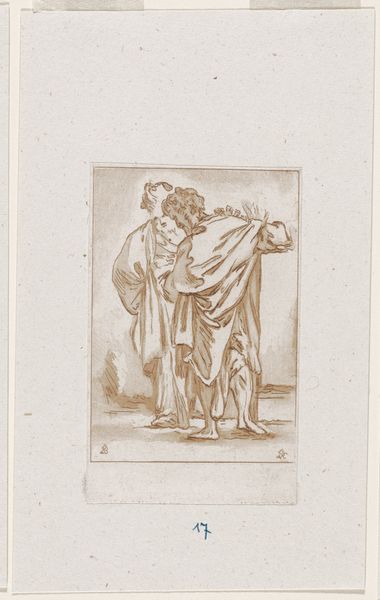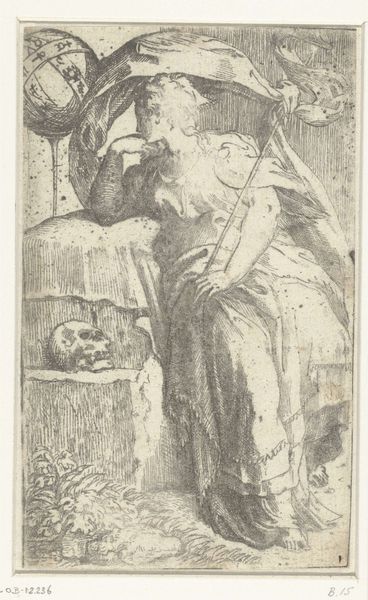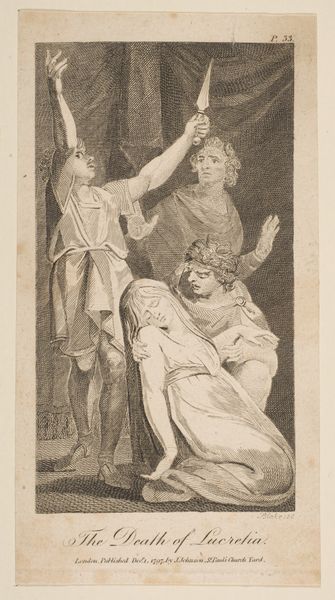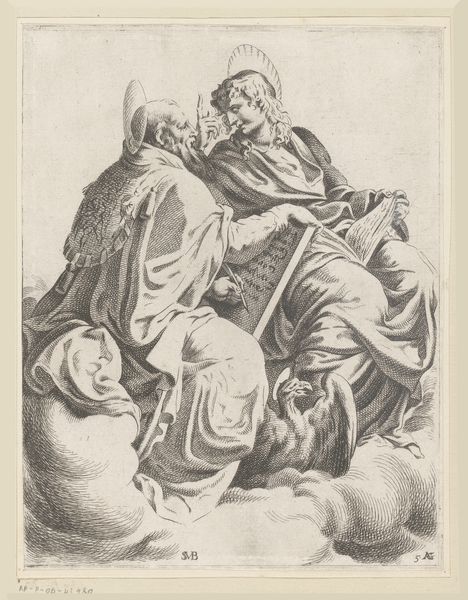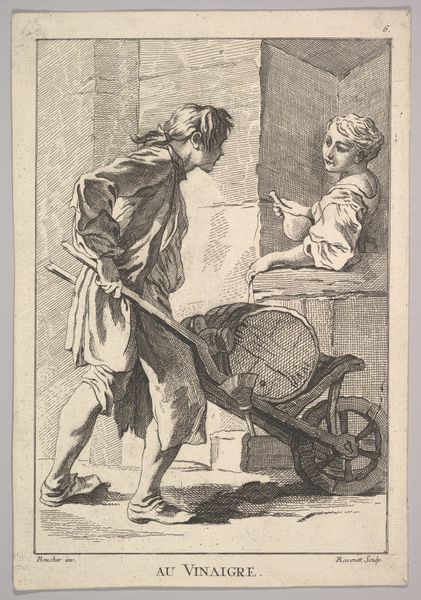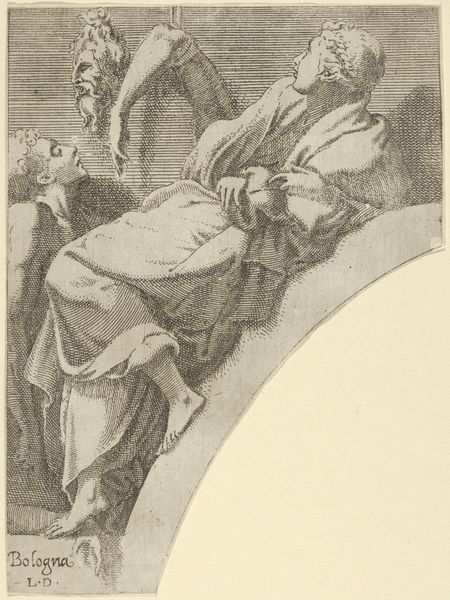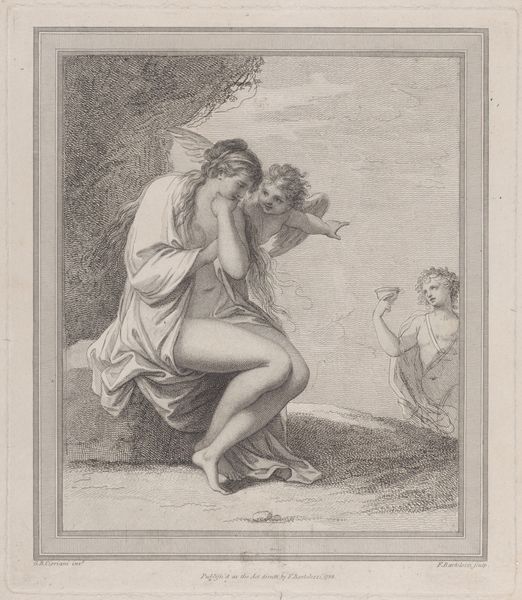
drawing, ink, pen
#
portrait
#
drawing
#
imaginative character sketch
#
light pencil work
#
quirky sketch
#
baroque
#
pencil sketch
#
figuration
#
personal sketchbook
#
ink
#
pen-ink sketch
#
sketchbook drawing
#
pen
#
pencil work
#
storyboard and sketchbook work
#
sketchbook art
Dimensions: height 177 mm, width 139 mm
Copyright: Rijks Museum: Open Domain
Editor: Here we have "Knielende man," or "Kneeling Man," a pen and ink drawing from between 1606 and 1674, by Leonaert Bramer, currently housed in the Rijksmuseum. The sketch feels raw, immediate... almost like a quick study of suffering or supplication. What stands out to you? Curator: The materiality really jumps out. Consider the cheapness of paper and ink compared to a large canvas and expensive pigments. Bramer’s choice speaks to accessibility, doesn't it? Sketchbooks circulated readily amongst artists, a portable workshop of ideas, studies and practices. Editor: That's fascinating. I hadn't considered the sketchbook as a form of "portable workshop." So, how does the medium influence your understanding of the artwork? Curator: The hasty marks, the uneven distribution of ink – it suggests a kind of artistic labor distinct from the commissioned portraiture of the time. Bramer isn’t crafting a polished likeness for a patron; he’s exploring form, emotion, maybe even working through personal struggles on paper. Think about who had access to these skills of production. Editor: So the very act of sketching itself becomes a form of… resistance, maybe? Against the more rigid expectations of art production? Curator: "Resistance" might be too strong. But it's definitely a negotiation with artistic conventions and the economic structures that support them. The artwork, as an artifact, is inseparable from its production! What do you make of the classical column in the background? Editor: Initially, I thought it just added a touch of drama or historical context. But if we’re looking at it from a material perspective, perhaps its inclusion highlights a tension: the grandiosity of classical architecture rendered in humble, readily available materials. Curator: Precisely. We begin to see art history not just as a progression of styles, but as a reflection of shifting social relations, labor practices, and the very economics of image production. Editor: That really changes how I view this piece! I now appreciate it's not just about the subject’s emotions, but also about the means used to convey them and the social implications of those choices. Curator: Exactly. Examining these elements allows us a richer, more grounded appreciation of the artist's world and choices.
Comments
No comments
Be the first to comment and join the conversation on the ultimate creative platform.
